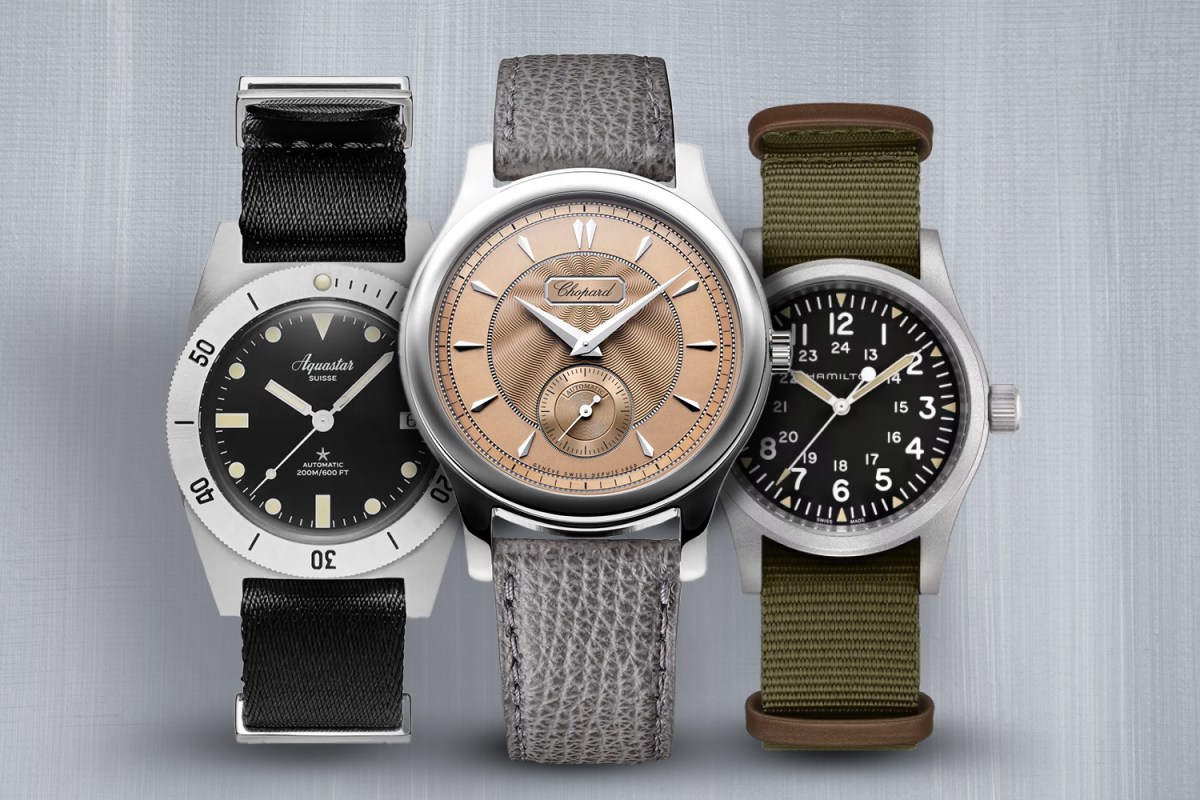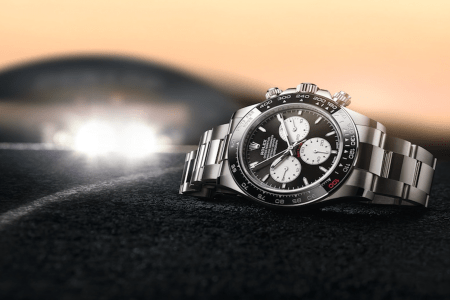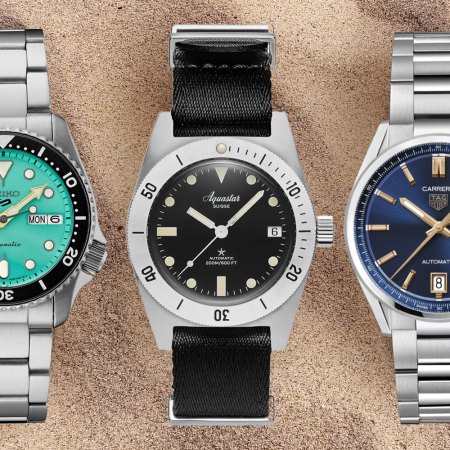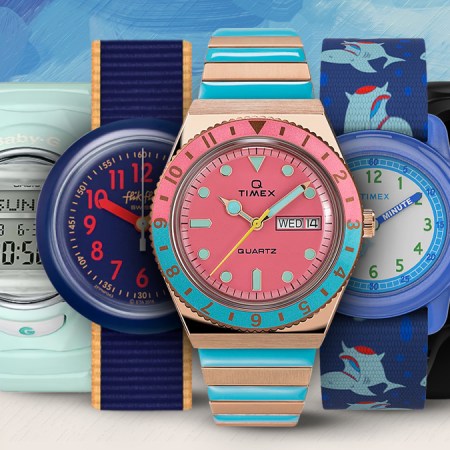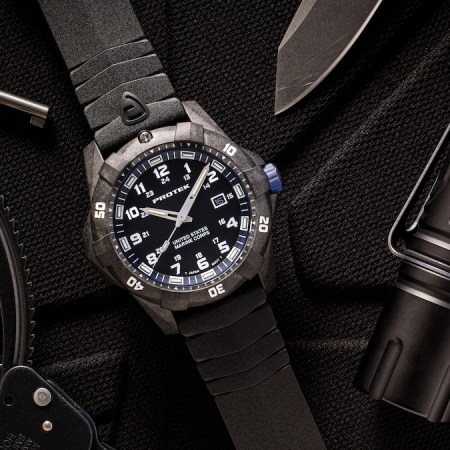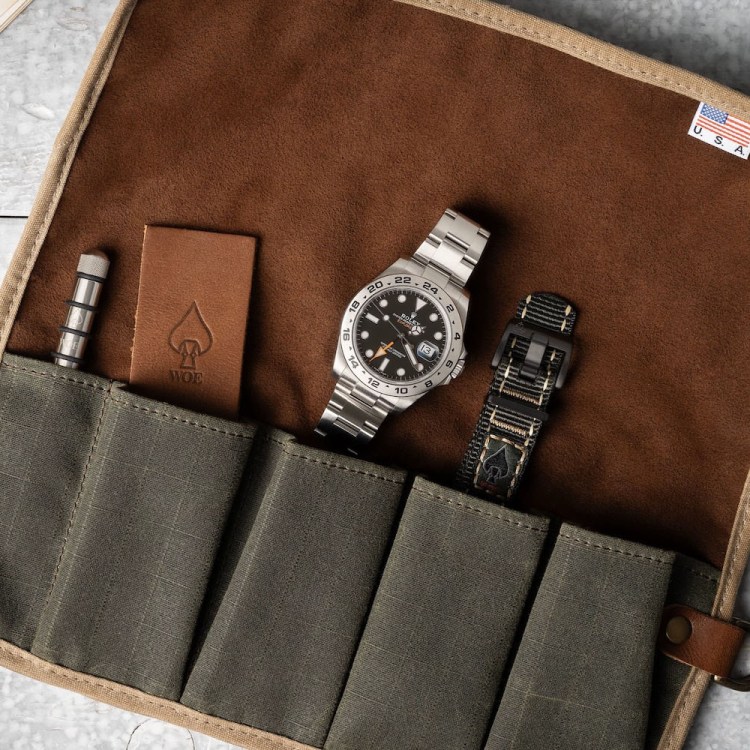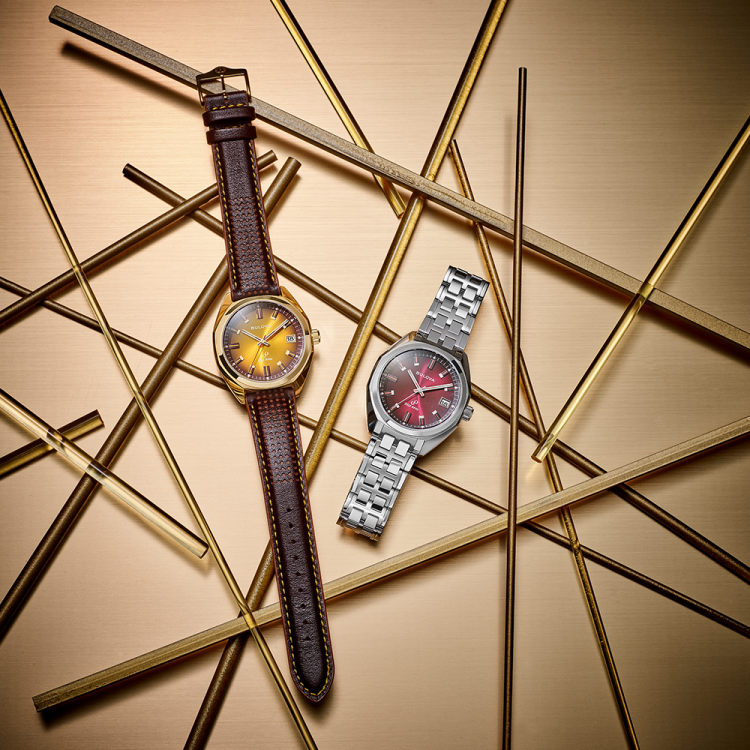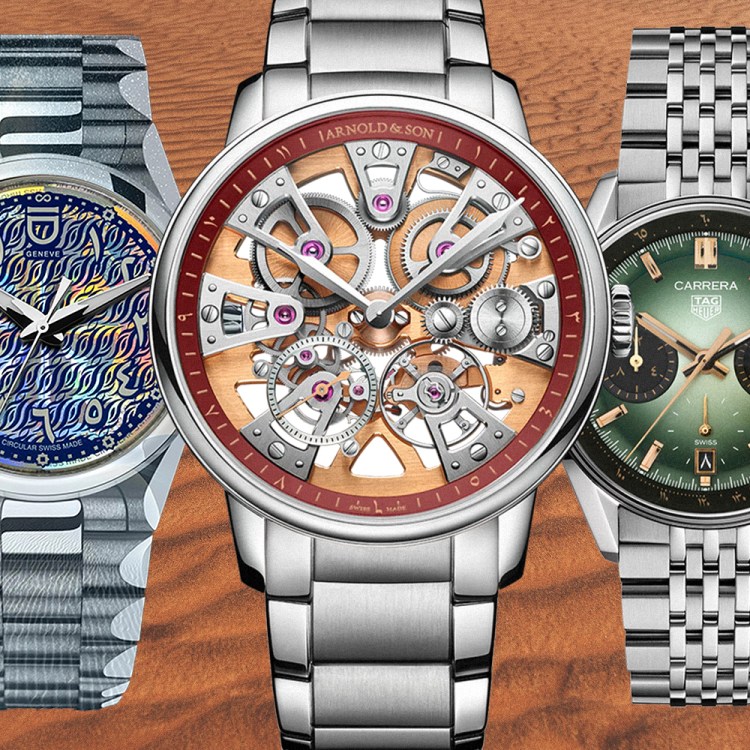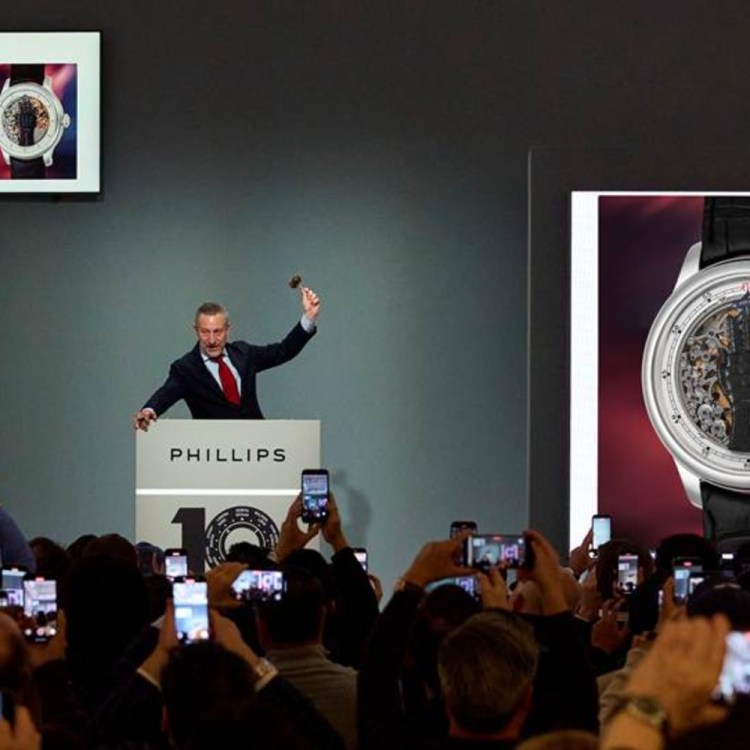At long last, we’re rounding the zeitgeist’s corner into a world in which sub-41mm timepieces are back in vogue, normalized and acceptable.
It certainly took us a while to get here. A train that left the station in the 1920s and was traveling just fine, thank you very much through the horological hinterland was diverted from its true course sometime around Panerai’s transition from military supplier to public entity in 1993. A watch that made perfect tactical sense at 47mm was suddenly in vogue within a distinctly sartorial context, and, from Stallone’s wrist to God’s ears, we found ourselves in the early 2000s — the time of Dinner Plate Watches.
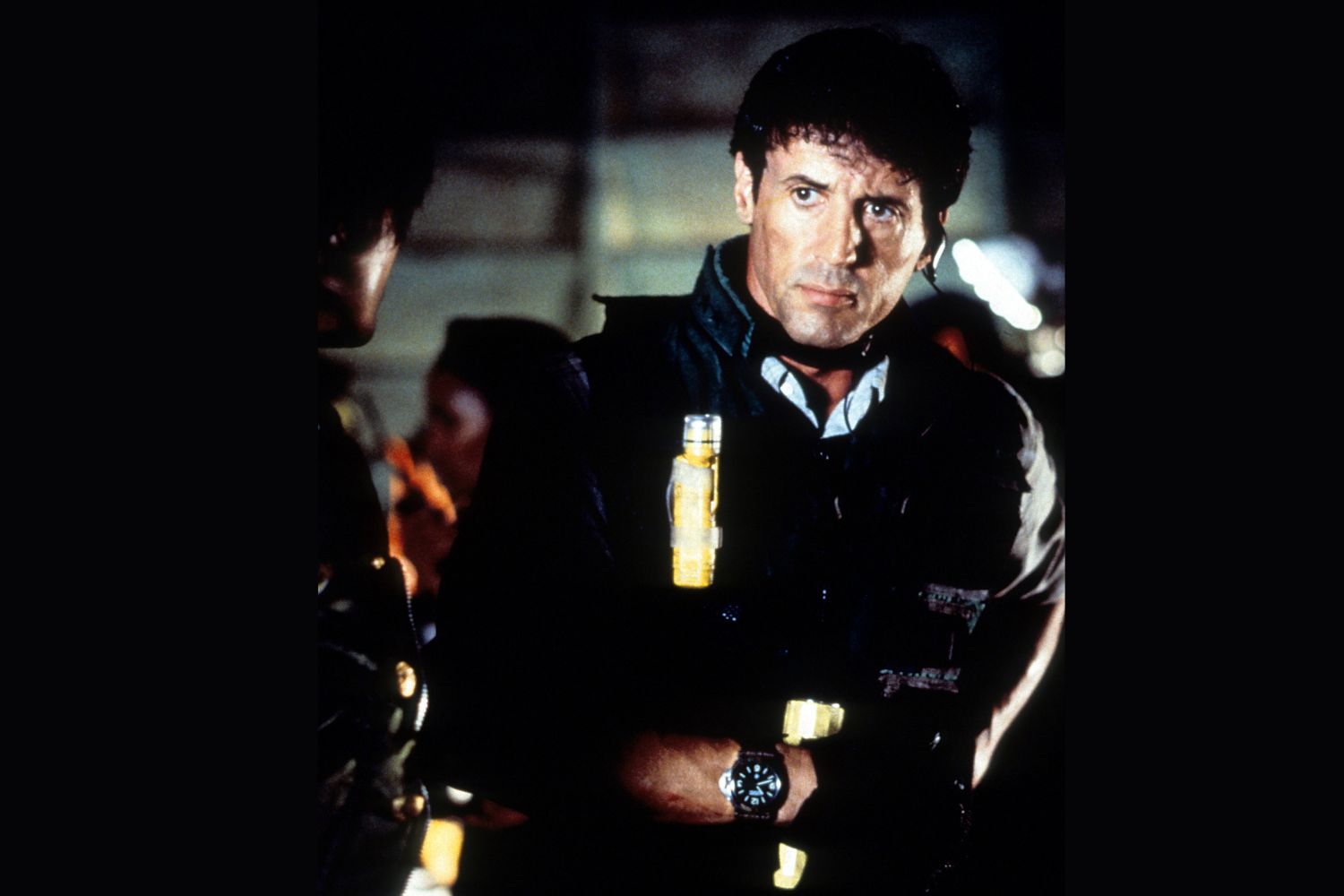
Audemars Piguet Offshores. Breitling Super Avengers. Anything that said “I.W.C.” on it. Sizes 44mm+ were suddenly in vogue, and this despite the fact that the average man’s wrist circumference back then was no more 8” than it is today. (Sorry, fellas.) In fact, according to The Armoury’s Mark Cho, it seems to be closer to 6.74”, a size that no more warrants a 44mm watch than a 38” chest warrants a size XXXL t-shirt. (Though to be fair, the ‘90s saw many of these, as well.)
Why is any of this important? It’s not, relatively speaking — let’s get that out of the way, right away. We’re talking about wristwatches here. However, whenever my best friend (and fellow watch nerd) says something to me like, “I just can’t pull it off something smaller than 40mm,” I look at all 5’8” of him and want to smack him in the face. “What the actual fuck are you talking about, pray tell?!”
Rolex Just Launched a Very Special Cosmograph Daytona
The ref. 126529LN celebrates 100 years of racing at the 24 Hours of Le Mans.Let’s look briefly back through horological and sartorial history — and I mean briefly: Those first trench watches that were born from the cauldron that was World War I? Positively tiny by contemporary standards at 31-33mm (or thereabouts). The Cartier Tank à Guichet one saw on the wrists of such distinguished gentlemen as Duke Ellington? 26mm. (The thing was the size of, like, five 16th notes.) Same thing with Muhammed Ali’s Tank — and there was someone who’s mystique necessitated never coming off like anything other than an absolute killer. Does anyone think he looked down at his wrist and felt emasculated wearing a “tiny” watch? Fuck, no.
What about soldiers? During the Second World War, many American G.I.s were outfitted with the A-11. And how wide were those? Again, between 31-33mm, depending on the make. And the famed “Dirty Dozen” watches? Larger — but still “only” 35-38mm. The original Submariner? 37mm. Most chronographs? Through the 1970s, it’s probably fair to say that there were still relatively few that were larger than, say, 38 mm, many of these being military or “professional” models meant for racing, etc. But look at a dressier chrono from the golden age of the chronograph in the mid-20th century, and we’re talking about a 34mm-37mm watch — not some 45mm flying saucer.
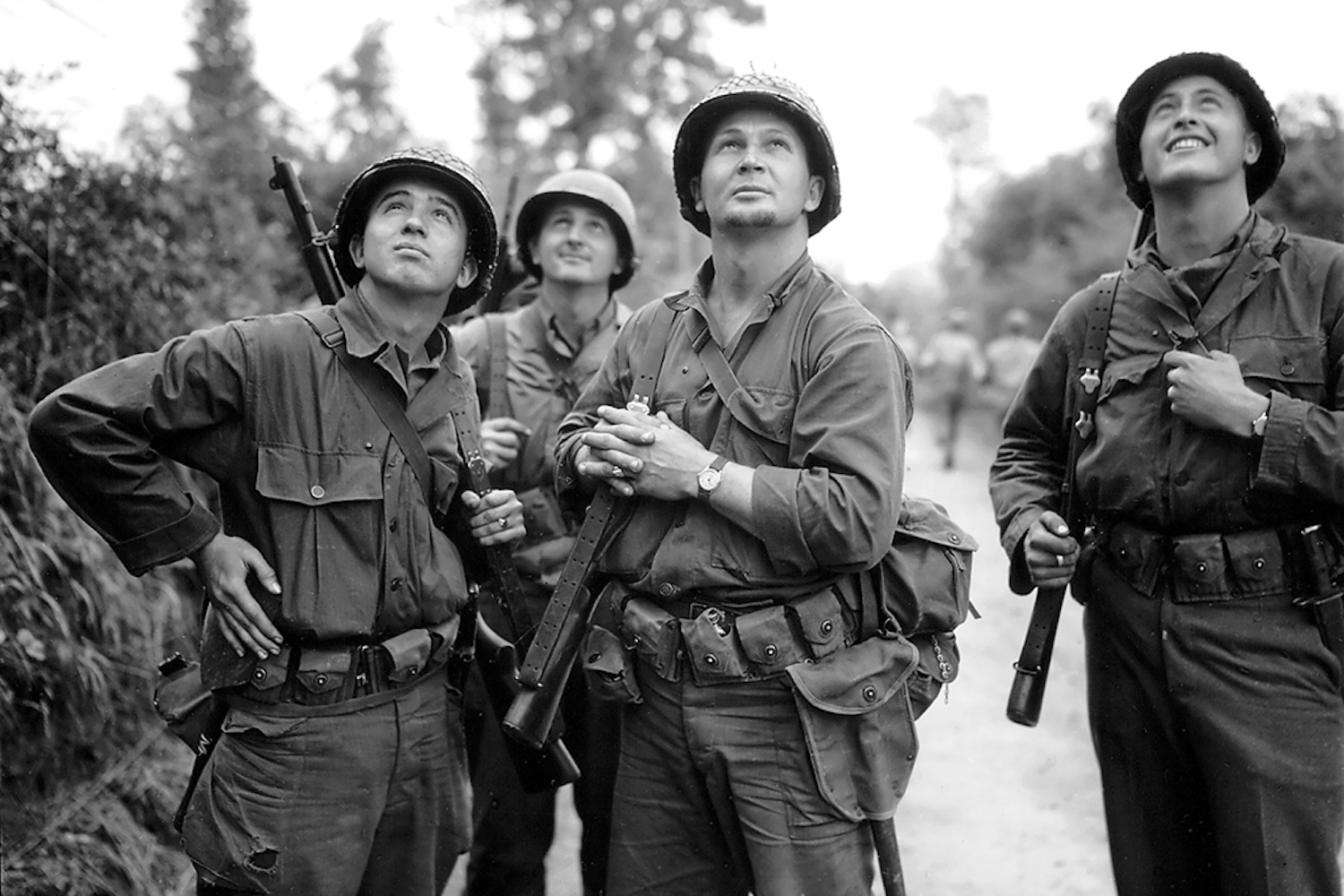
So what happened? Well, one could argue that Emmanuel Gueit happened. He was a young designer at Audemars Piguet when then-chairman Stephen Urquhart decided a new watch was needed to coincide with the impending 20th anniversary of the Royal Oak in 1992. Gueit thought that too many women were wearing men’s watches, and decided to make something so large and imposing that only men would conceivably be able to wear it. Hence the Royal Oak Offshore.
The Offshore — and Panerai’s debut onto the world stage — set said stage in the early 1990s for the Big Watch Revolution that would last, one could argue, 15+ years. (It most certainly lasted at least a decade, by anyone’s measure.) Only now, helped along by the call of many watch journalists, does this trend finally seem to be abating in favor of more reasonably sized timepieces.
And not a moment too soon, I say. Because while it’s not necessarily a watch’s diameter, but it’s lug-to-lug measurement that renders it comfortable or uncomfortable, I find the notion of a timepiece that stretches across the length of my wrist like the Afrika Korps crossing Cyrenaica to be, ahem, unnecessary at best…and an utter and complete pissing contest at worst. Show me these gargantuan-wristed men! Show me them in their unwashed, Predator-slaying thousands! “We must equip them with wrist-clocks!” said no one ever!
Look down at your normal-sized watch on your, I’m sorry to say, normal-sized wrist: Is there space between the watch head and the edges of your wrist? Probably is, right? Looks appealing — aesthetically pleasing — doesn’t it? It should; it’s indicative of a good fit. If the lugs were hanging off the edge of your wrist (which tends to happen when a normal-sized human wears an oversized watch), it would be both uncomfortable and strange-looking. There should be some space there to frame the watch, I say, much as a mat often frames a piece of art. (Only psychopaths and MoMA employees are allowed to skip the mat.)
Larger watches that are (relatively) large for the sake of legibility — such as a Submariner or a Breitling Navitimer ref. 806 — still have room on many wrists to sit there in an aesthetically pleasing (as well as a physically comfortable) manner. But dress watches, such as a gold IWC Caliber 89 or a Cartier Tank Normale? Those things need space — beg for it. They’re meant to be unobtrusive, which is why oversized dress watches often just, well, don’t work. When they call attention to themselves, they violate their own design remit.
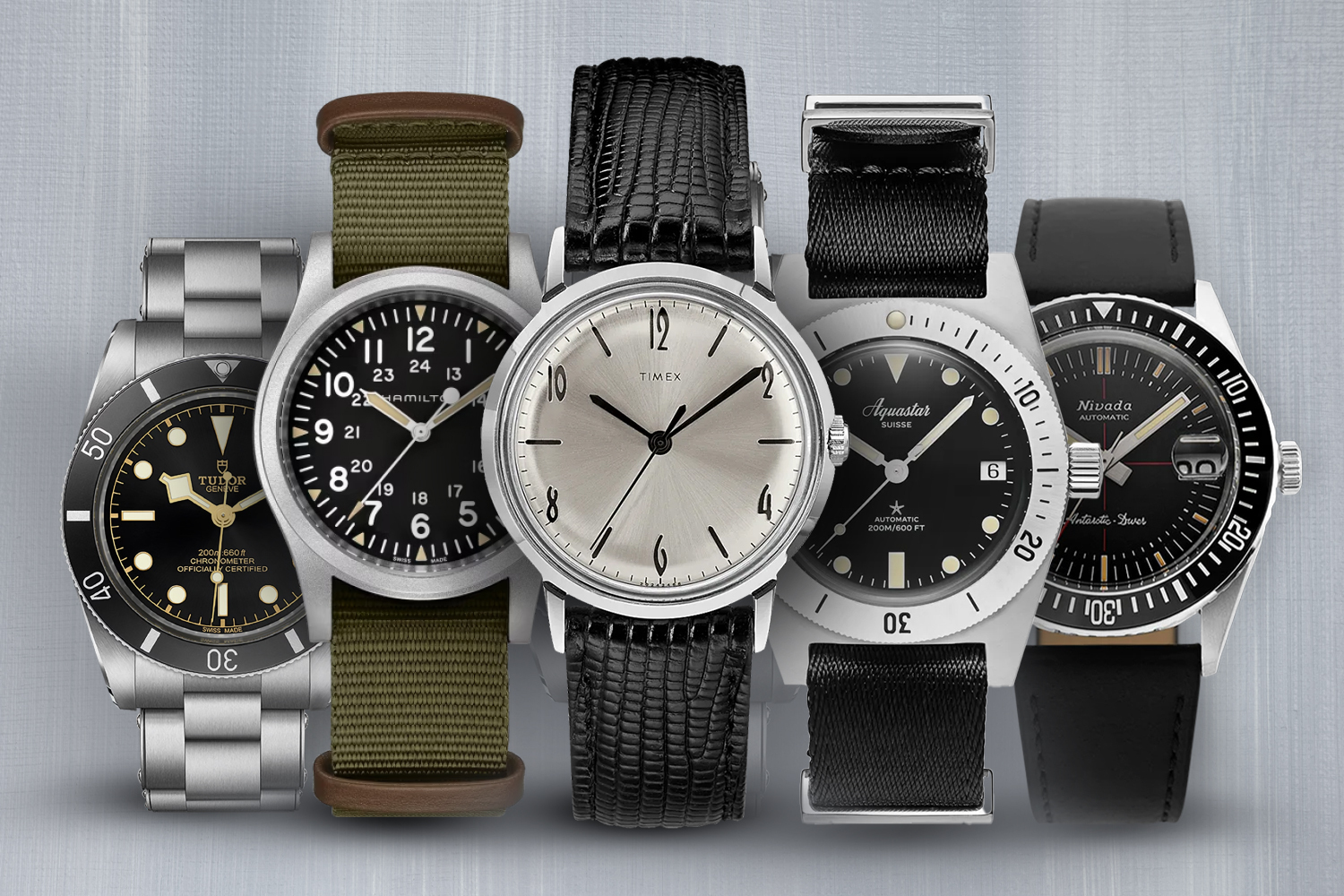
None of this, like anything in watches, need be prescriptive, of course; watches are meant to be fun, after all. But I, for one, am overjoyed at the popularity of the Hamilton Khaki Field Mechanical (38mm); the Timex Marlin (34mm); and the NOMOS Club (36mm). I love that more and more companies are designing and releasing sub-40mm fare, such as skin divers like the Aquastar Model 60 (37mm) and Nivada Antarctic Diver (38mm); the Tudor Black Bay 54 (37mm); the Rolex Perpetual 1908 (39mm); and the Chopard LUC 1860 (36.5mm). From affordable Seiko 5 Sports to eye-wateringly expensive J.N. Shapiro Resurgence (38mm), watch sizes are trending downward once again, attainting specifications that make them seem fit for average human-sized consumption.
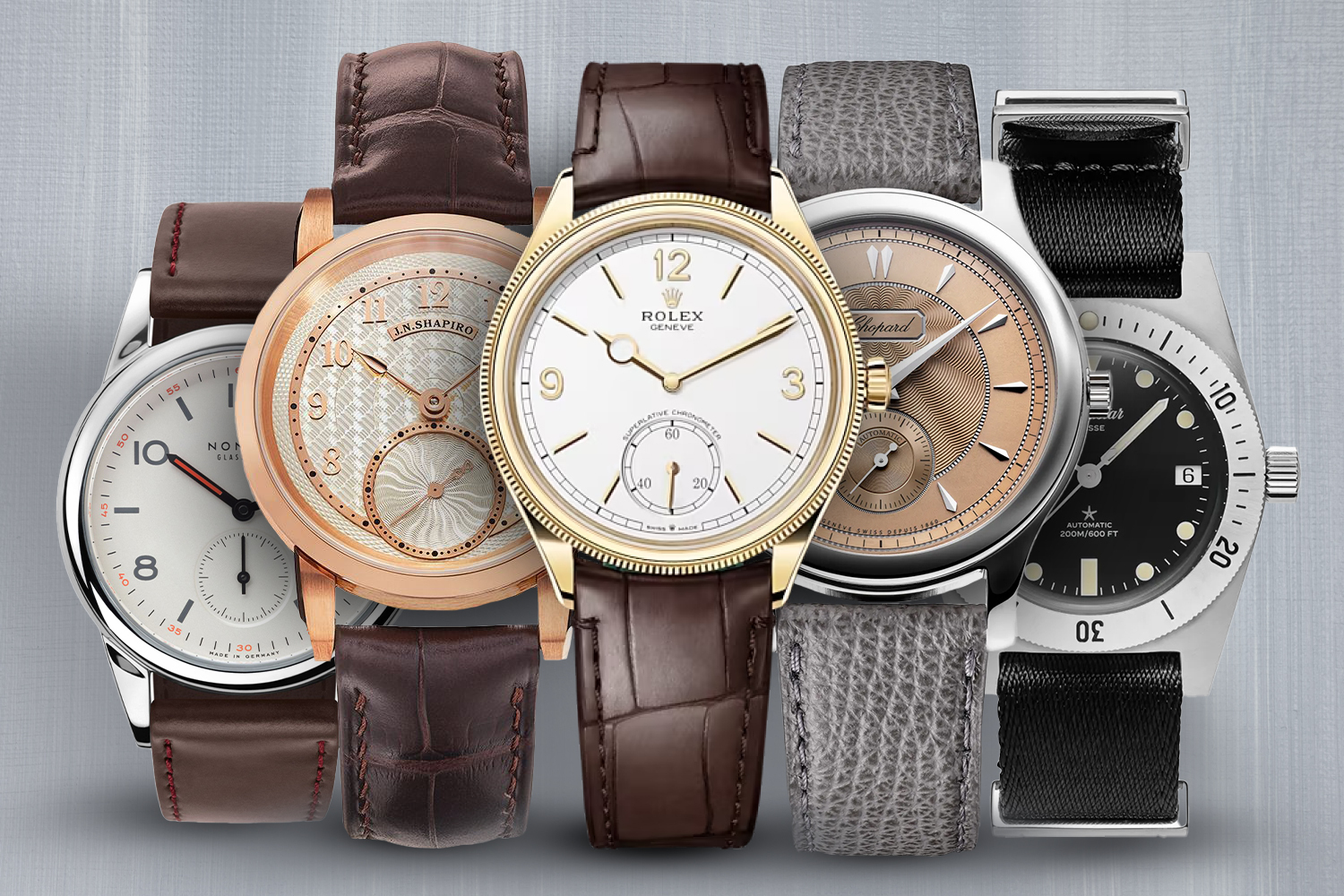
We in the watch world should embrace this; encourage it; make sure it lasts awhile. The sartorial pendulum will, of course, inevitably swing back in the other direction — I’m pretty sure I just saw a kid wearing what are now-vintage JNCOs the other day, FFS — but we should do everything in our power to prolong this moment. Watches were made to be enjoyed this way, I would argue. After all, if we’re going to advocate for the existence of antiquated technology, we may as well look good — and be comfortable — doing it.
This article appeared in an InsideHook newsletter. Sign up for free to get more on travel, wellness, style, drinking, and culture.
